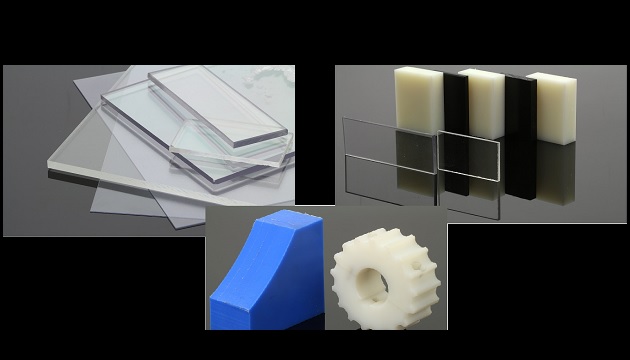In modern industry, programmable tools play a key role due to their high repeatability and reliability. Whenever you want to manufacture a precision component like a bracket or bushing (or a whole line of them), you need to design and create that component, paying attention to the smallest details. This is why CNC (Computerized Numerical Control) machine tools are so popular: they enable fast – and, more importantly, cheap – production of precision components.
What is CNC machining?
This term encompasses all machining operations performed with computer-controlled tools, mostly milling machines and lathes. The first step is always designing a component. CAD (Computer Aided Design) software is perfect for this task, especially since it lets you perform machining simulations. Using the “Manufacturing” module in Siemens NX, you can pick the right tools (mills, drills, countersinks), program the applicable machining process (milling, turning, drilling) and set its precision level (coarse, fine). The simulation is then saved in the GRIP programming language and forwarded to technicians who prepare the CNC machine tool and upload the program. Once the program is executed successfully (in accordance with standards), all you have to do is wait for the machine tool to produce the designed component with high precision.
The main component of a CNC machine tool is the table on which you place material samples – that’s what each item is made of. Directly above the table, there is an automatic, controllable arm with a grip. If a simulation is programmed accordingly, this arm will automatically pick the right tool for each operation and perform the machining process. The entire machine tool is covered to prevent material shavings and other residues from getting outside. A CNC machine tool is operated using a control panel located at the front – this is also where you can insert a USB drive with special machining software.
Machine tools can be grouped into many different classes. The most popular classification is based on the number of axes that a machine tool can work in. Currently, five-axis tools are the most sought after due to their high precision and large number of applications.
What can be CNC machined
The choice of materials that can be CNC machined really depend on each customer’s needs. Oftentimes, a customer does not clearly state their expectations about the material of the part they order. The item is simply expected to withstand a certain mechanical load or endure a number of work cycles. All kinds of metal alloys are widely used, but plastics are becoming increasingly popular as well. Those materials include:
- Polyamides – very rigid, mechanically durable, and resistant to wear. This makes them the perfect choice for transmission components (gears). Moreover, parts made of polyamides have self-lubricating properties due to the mineral oil modifications performed during the polymerisation process, which simplifies operation of devices they are installed in. Due to their properties, polyamides are also perfect for machining.
- PET – components made of this material have high rigidity and dimensional stability, and a very low friction coefficient. PET parts perform exceptionally well in harsh environments, where they may be exposed to humidity or acids.
- POM-C – this material is ideal for manufacturing components working under variable loads. Due to its low humidity absorption, it can be used in wet environments, e.g. pumps. POM-C is fully CNC machinable.
- PEEK – a semi-crystalline, highly efficient thermoplastic material that maintains its efficiency even in very harsh environments. Slide bearings, gears and chain guides made of PEEK can keep working for many hours thanks to this material’s high abrasive wear resistance and a low friction coefficient. It is also perfect for CNC machining. PEEK is usually available in the form of intermediate products that come in different shapes, making it easier to reshape the material into a desired component.
- Polycarbonate (PC) – an amorphous, thermoplastic material that is very transparent. Modified polycarbonate (sometimes called “permeable polycarbonate”) is also commonly used due to its high UV radiation resistance which protects components from accelerated aging due to excessive irradiation. PC is also highly resistant to dynamic loads, and since it does not crumble or chip off, it’s perfect for CNC machining.
In addition to the materials listed above, TME’s offer also includes POM-H, polyethylene, PMMA-Plexi, and PVC.
Injection moulding or CNC machining?
As plastic manufacturing methods became more advanced, the materials themselves became cheaper and more durable. This made them considerably more useful for engineers and designers. Along with the development of CNC machining, injection moulding technology also kept developing. It’s based on a similar principle: first, you design an item. Then, you program the machine to make it. However, injection moulding is very labour-intensive and much more time-consuming than machining. What’s worse, you can only get one component from a single mould. With machining, you can make any number of models in a very short time if you have a large amount of prefabricated material, and quickly adjust your products to new situations when producing larger batches – change their size, material, and other parameters. This makes CNC machining excellent for introducing new products or components to the market that the manufacturer is not 100% sure about. The repeatability of CNC machining means it is possible to create a batch of identical prototype items, present them to a large group of customers, and make any necessary adjustments later.
Article Courtesy: TME
About TME:
Transfer Multisort Elektronik (TME) is one of the biggest global distributors of electronic, electromechanical, industrial automatic components as well as workplace equipment. TME headquarters in Poland and subsidiaries in other countries.








